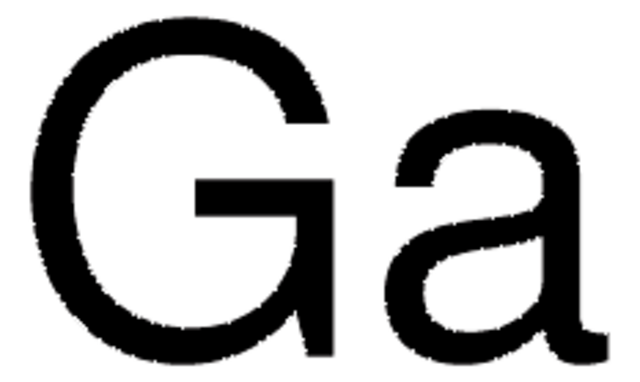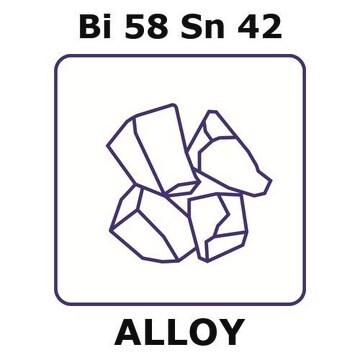244104
Woods metal
stick
Autenticatiper visualizzare i prezzi riservati alla tua organizzazione & contrattuali
About This Item
Prodotti consigliati
Stato
stick
Composizione
Bismuth, 50 wt. %
Cadmium, 12.5 wt. %
Lead, 25 wt. %
Tin, 12.5 wt. %
Punto di fusione
73-77 °C (lit.)
Stringa SMILE
[Cd].[Sn].[Pb].[Bi]
InChI
1S/Bi.Cd.Pb.Sn
SSWIVUPIIWJGCS-UHFFFAOYSA-N
Cerchi prodotti simili? Visita Guida al confronto tra prodotti
Avvertenze
Danger
Indicazioni di pericolo
Consigli di prudenza
Classi di pericolo
Acute Tox. 4 Dermal - Acute Tox. 4 Inhalation - Acute Tox. 4 Oral - Aquatic Acute 1 - Aquatic Chronic 1 - Carc. 1B - Lact. - Muta. 2 - Repr. 1A - STOT RE 2
Classe di pericolosità dell'acqua (WGK)
WGK 3
Punto d’infiammabilità (°F)
Not applicable
Punto d’infiammabilità (°C)
Not applicable
Scegli una delle versioni più recenti:
Possiedi già questo prodotto?
I documenti relativi ai prodotti acquistati recentemente sono disponibili nell’Archivio dei documenti.
H Kubo et al.
International journal of radiation oncology, biology, physics, 8(10), 1741-1745 (1982-10-01)
A technique is described to reduce the dose to the contralateral testicle of patients with testis tumors during retroperitoneal therapy with 10 MV X rays. When a conventional clam-shell shielding device was used, the dose to the testis from the
D M Dimitriadis et al.
Medical dosimetry : official journal of the American Association of Medical Dosimetrists, 27(3), 215-220 (2002-10-11)
This study describes the importance of attenuator scatter in the construction of compensators. The attenuator used in this study was Lipowitz metal, commonly referred to as cerrobend. Linear attenuation coefficients of cerrobend were measured in air for different thickness of
Attenuation characteristics of Lipowitz's metal for fast neutrons.
P R Almond et al.
Health physics, 55(1), 91-93 (1988-07-01)
G P Glasgow
Medical dosimetry : official journal of the American Association of Medical Dosimetrists, 16(1), 13-18 (1991-03-01)
Low melting temperature bismuth alloys that contain about 20% to 25% lead and 10% cadmium are widely used in radiotherapy to construct shielding blocks. Since 1980, five papers have addressed questions concerning potential metal toxicity, safe shop practices, measurement of
Il team dei nostri ricercatori vanta grande esperienza in tutte le aree della ricerca quali Life Science, scienza dei materiali, sintesi chimica, cromatografia, discipline analitiche, ecc..
Contatta l'Assistenza Tecnica.











